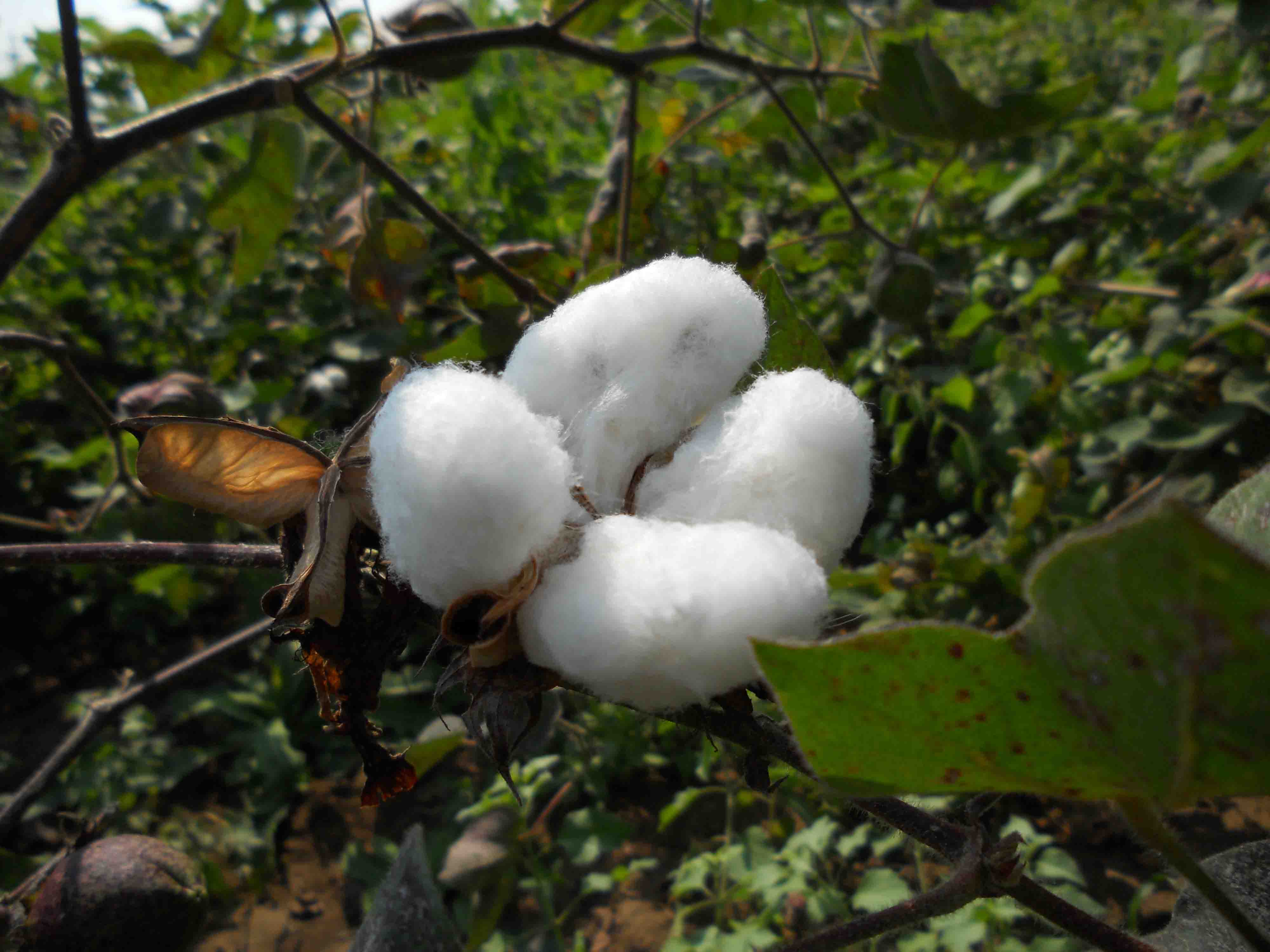|
Phytelephas Aequatorialis
The palm tree ''Phytelephas aequatorialis'', commonly known as Ecuadorian ivory palm, is the main source of Ecuadorean vegetable ivory or tagua, a botanical alternative to ivory. It is found in the tropical rainforests of the western Andean slopes of Ecuador. It has a woody trunk which can grow to 20 m in height and very long pinnate leaves. Description The plants are dioecious, with the female individuals bearing large brown conical fruits, each approximately the size of a grapefruit (but occasionally up to in diameter and weighing up to and covered in a horned husk, containing usually four seeds. Immature seeds contain sweet edible pulp. Mature seeds are harder than wood and are encased in a bonelike shell. The endosperm is a white hemicellulose material that is so hard it can be polished and carved like ivory. The male flowers are in a catkin, and each flower has as many as 1,000 stamens,Little and Dixon Arboles Communes loc.cit. the greatest number in any monocot. The plan ... [...More Info...] [...Related Items...] OR: [Wikipedia] [Google] [Baidu] |
Richard Spruce
Richard Spruce (10 September 1817 – 28 December 1893) was an English botanist specializing in bryology. One of the great Victorian botanical explorers, Spruce spent 15 years exploring the Amazon from the Andes to its mouth, and was one of the very first Europeans to observe many of the places where he collected specimens. Spruce discovered and named a number of new plant species, and corresponded with some of the leading botanists of the nineteenth century. Early life and career Richard Spruce was born near Ganthorpe, a small village near Castle Howard in Yorkshire. After training under his father, a local schoolmaster, Spruce began a career as a tutor and then as a mathematics master at St Peter's School in York between 1839 and 1844. Spruce started his botanical collecting in Yorkshire about 1833. In 1834, at age 16, he drew up a neatly written list of all of the plants he had found on trips around Ganthorpe, focusing on bryophytes. Arranged alphabetically and contain ... [...More Info...] [...Related Items...] OR: [Wikipedia] [Google] [Baidu] |
Mesocarp
Fruits are the mature ovary or ovaries of one or more flowers. They are found in three main anatomical categories: aggregate fruits, multiple fruits, and simple fruits. Fruitlike structures may develop directly from the seed itself rather than the ovary, such as a fleshy aril or sarcotesta. The grains of grasses are single-seed simple fruits wherein the pericarp and seed coat are fused into one layer. This type of fruit is called a caryopsis. Examples include cereal grains, such as wheat, barley, oats and rice. Categories of fruits Fruits are found in three main anatomical categories: aggregate fruits, multiple fruits, and simple fruits. Aggregate fruits are formed from a single compound flower and contain many ovaries or fruitlets. Examples include raspberries and blackberries. Multiple fruits are formed from the fused ovaries of multiple flowers or inflorescence. An example of multiple fruits are the fig, mulberry, and the pineapple. Simple fruits are formed from a s ... [...More Info...] [...Related Items...] OR: [Wikipedia] [Google] [Baidu] |
Phytelephas
''Phytelephas'' is a genus containing six known species of dioecious Arecaceae, palms (family (biology), family Arecaceae), occurring from southern Panama along the Andes to Ecuador, Bolivia, Colombia, northwestern Brazil, and Peru. They are commonly known as ivory palms, ivory-nut palms or tagua palms (); the Binomial nomenclature, scientific name ''Phytelephas'' means "plant ivory" or more literally, "plant elephant". This and the first two of the common names refer to the very hard white endosperm of their seeds (tagua nuts or jarina seeds), which resembles ivory, elephant ivory. Description They are medium-sized to tall palms reaching up to 20 m tall, with pinnate leaf, leaves. The "nut" is covered with Fruit anatomy, pericarp, which gets removed by animals. The kernel is covered with a brown, flaky skin and shaped like a small avocado, roughly 4–8 cm in diameter. The male plants produce Catkin, catkins up to three feet (0.9 meter) in length of male flowers, each beari ... [...More Info...] [...Related Items...] OR: [Wikipedia] [Google] [Baidu] |
Vegetable Ivory
Vegetable ivory or Phytelephas, tagua nut is a product made from the very hard white endosperm of the seeds of certain Arecaceae, palm trees. Vegetable ivory is named for its resemblance to ivory, animal ivory. Vegetable ivory is naturally white with a fine marbled grain structure. It can be dyed; dyeing often brings out the grain. It is still commonly used in buttons, jewelry, and artistic carving. Location Species in the genus ''Phytelephas'' (literally "elephant plant"), native to South America, are the most important sources of vegetable ivory. The seeds of the Metroxylon amicarum, Caroline ivory-nut palm from the Caroline Islands, Metroxylon warburgii, natangura palm from Solomon Islands and Vanuatu, and the Hyphaene petersiana, real fan palm, from Sub-Saharan Africa, are also used to produce vegetable ivory. A tagua palm can take up to 15 years to mature. But once it gets to this stage it can go on producing vegetable ivory for up to 100 years. In any given year a tag ... [...More Info...] [...Related Items...] OR: [Wikipedia] [Google] [Baidu] |
Conservation Movement
The conservation movement, also known as nature conservation, is a political, environmental, and social movement that seeks to manage and protect natural resources, including animal, fungus, and plant species as well as their habitat for the future. Conservationists are concerned with leaving the environment in a better state than the condition they found it in. Evidence-based conservation seeks to use high quality scientific evidence to make conservation efforts more effective. The early conservation movement evolved out of necessity to maintain natural resources such as fisheries, wildlife management, water, soil, as well as conservation and sustainable forestry. The contemporary conservation movement has broadened from the early movement's emphasis on use of sustainable yield of natural resources and preservation of wilderness areas to include preservation of biodiversity. Some say the conservation movement is part of the broader and more far-reaching environmental mov ... [...More Info...] [...Related Items...] OR: [Wikipedia] [Google] [Baidu] |
Cash Crop
A cash crop, also called profit crop, is an Agriculture, agricultural crop which is grown to sell for profit. It is typically purchased by parties separate from a farm. The term is used to differentiate a marketed crop from a staple crop ("subsistence crop") in subsistence agriculture, which is one fed to the producer's own livestock or grown as food for the producer's family. In earlier times, cash crops were usually only a small (but vital) part of a farm's total yield, while today, especially in Developed country, developed countries and among Smallholding, smallholders almost all crops are mainly grown for revenue. In the Least developed country, least developed countries, cash crops are usually crops which attract demand in more developed nations, and hence have some export value. Prices for major cash crops are set in international trade markets with global markets, global scope, with some local variation (termed as "basis") based on Cargo, freight costs and local supply a ... [...More Info...] [...Related Items...] OR: [Wikipedia] [Google] [Baidu] |
Cuniculus Paca
The lowland paca (''Cuniculus paca''), also known as the spotted paca, is a large rodent found in tropical and sub-tropical America, from east-central Mexico to northern Argentina, and has been introduced to Cuba and Algeria. The animal is called ''paca'' in most of its range, but ''tepezcuintle'' (original Aztec language name) in most of Mexico and Central America, tepesquintle in Guatemala, ''guardatinaja'' in Nicaragua, ''pisquinte'' in northern Costa Rica, ' in the Yucatán peninsula, ''conejo pintado'' in Panama, ''guanta'' in Ecuador, ''majás'' or ''picuro'' in Peru, ''jochi pintado'' in Bolivia, and ''boruga'', ''tinajo'',Fauna y flora de la cuenca media del Río Lebrija en Rionegro, Santander - [...More Info...] [...Related Items...] OR: [Wikipedia] [Google] [Baidu] |
Porcupine
Porcupines are large rodents with coats of sharp Spine (zoology), spines, or quills, that protect them against predation. The term covers two Family (biology), families of animals: the Old World porcupines of the family Hystricidae, and the New World porcupines of the family Erethizontidae. Both families belong to the infraorder Hystricognathi within the profoundly diverse order (biology), order Rodentia and display superficially similar coats of rigid or semi-rigid quills, which are modified hairs composed of keratin. Despite this, the two groups are distinct from one another and are not closely related to each other within the Hystricognathi. The largest species of porcupine is the third-largest living rodent in the world, after the capybara and beaver. The Old World porcupines (Hystricidae) live in Italy, Asia (western and southern), and most of Africa. They are large, terrestrial, and strictly nocturnal. The New World porcupines (Erethizontidae) are indigenous to North Amer ... [...More Info...] [...Related Items...] OR: [Wikipedia] [Google] [Baidu] |
Marmosa
The 27 species in the genus ''Marmosa'' are relatively small Neotropical members of the family Didelphidae. This genus is one of three that are known as mouse opossums. The others are '' Thylamys'' (the "fat-tailed mouse opossums") and '' Tlacuatzin'', the grayish mouse opossum. Members of the genus '' Marmosops'' used to be called "slender mouse opossums", but are now just called "slender opossums". The thirteen members of the ''Marmosa'' subgenus ''Micoureus'', known as woolly mouse opossums, were formerly considered to be a separate genus, but were moved into ''Marmosa'' in 2009. Based on a comparison of sequences of one mitochondrial and three nuclear genes, three new subgenera, ''Eomarmosa'', ''Exulomarmosa'' and ''Stegomarmosa'', were recognized by Voss ''et al.'' in 2014. ''Eomarmosa'' and ''Exulomarmosa'', as well as ''Marmosa'' and ''Micoureus'', are thought to be sister taxa, while ''Stegomarmosa'' is viewed as sister to ''Marmosa'' plus ''Micoureus''. ''Exulomarmosa'' ... [...More Info...] [...Related Items...] OR: [Wikipedia] [Google] [Baidu] |
Opossum
Opossums () are members of the marsupial order Didelphimorphia () endemic to the Americas. The largest order of marsupials in the Western Hemisphere, it comprises 126 species in 18 genera. Opossums originated in South America and entered North America in the Great American Interchange following the connection of North and South America in the late Cenozoic. The Virginia opossum is the only species found in the United States and Canada. It is often simply referred to as an opossum; in North America, it is commonly referred to as a possum (; sometimes rendered as ''possum'' in written form to indicate the dropped "o"). The Australasian arboreal marsupials of suborder Phalangeriformes are also called possums because of their resemblance to opossums, but they belong to a different order. The opossum is typically a nonaggressive animal and almost never carries the virus that causes rabies. Etymology The word ''opossum'' is derived from the Powhatan language and was first recorde ... [...More Info...] [...Related Items...] OR: [Wikipedia] [Google] [Baidu] |
Odocoileus Virginianus
The white-tailed deer (''Odocoileus virginianus''), also known commonly as the whitetail and the Virginia deer, is a medium-sized species of deer native to North, Central and South America. It is the most widely-distributed mainland ungulate herbivore in the Americas; coupled with its natural predator, the mountain lion (''Puma concolor''), it is one of the most widely-distributed terrestrial mammal species in the Americas and the world. Highly adaptable, the various subspecies of white-tailed deer inhabit many different ecosystems, from arid grasslands to the Amazon and Orinoco basins; from the Pantanal and the Llanos to the high-elevation terrain of the Andes. Globally, the white-tailed deer has been introduced (primarily for sport hunting) to New Zealand, the Greater Antilles of the Caribbean (Cuba, Jamaica, Hispaniola, and Puerto Rico), and some countries in Europe (mainly the Czech Republic, Finland, France, Germany, Romania and Serbia). In North America, the white-tai ... [...More Info...] [...Related Items...] OR: [Wikipedia] [Google] [Baidu] |






